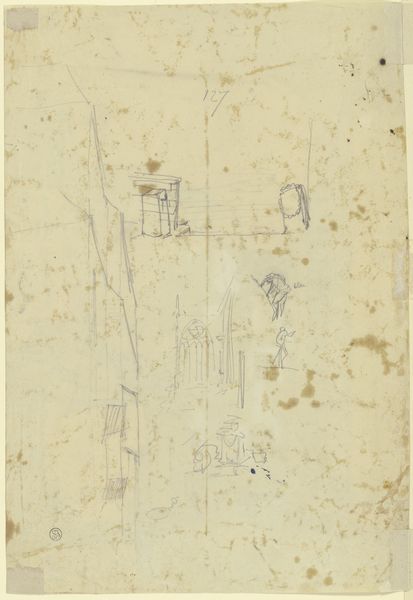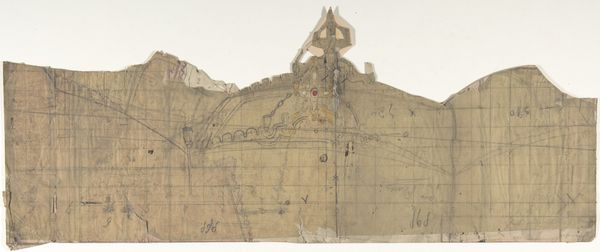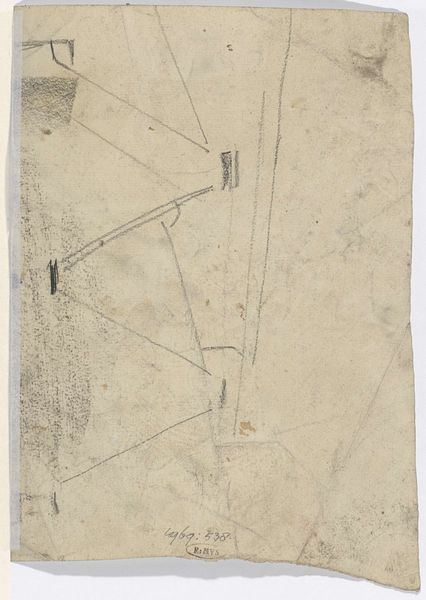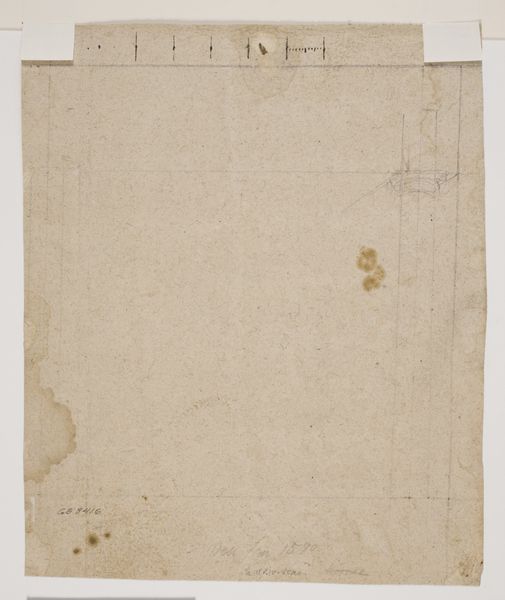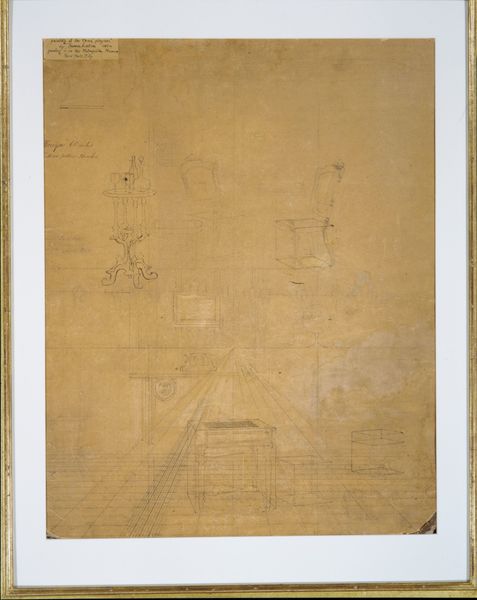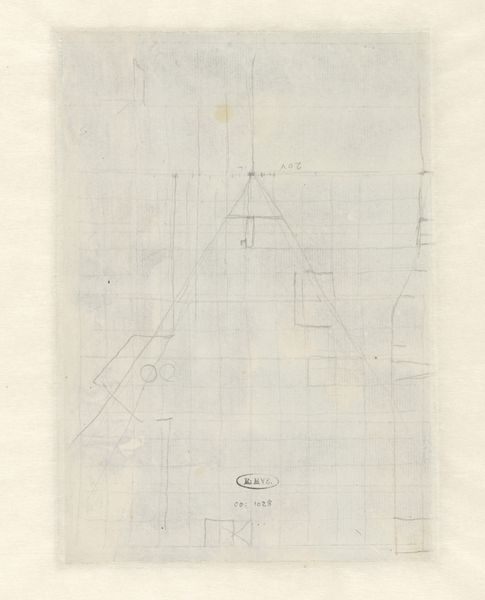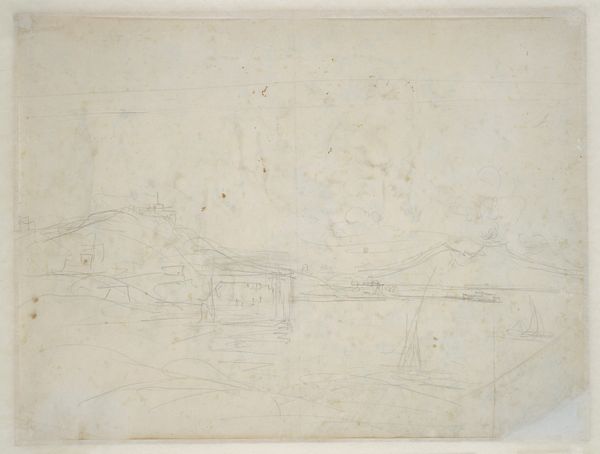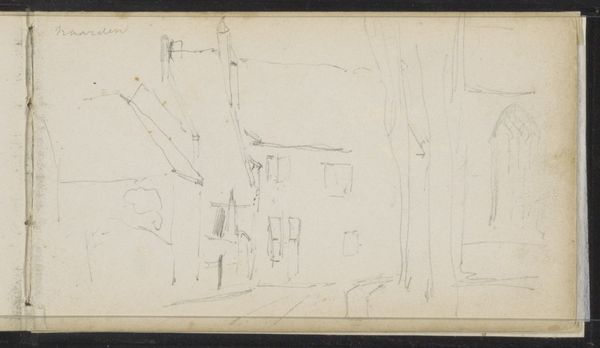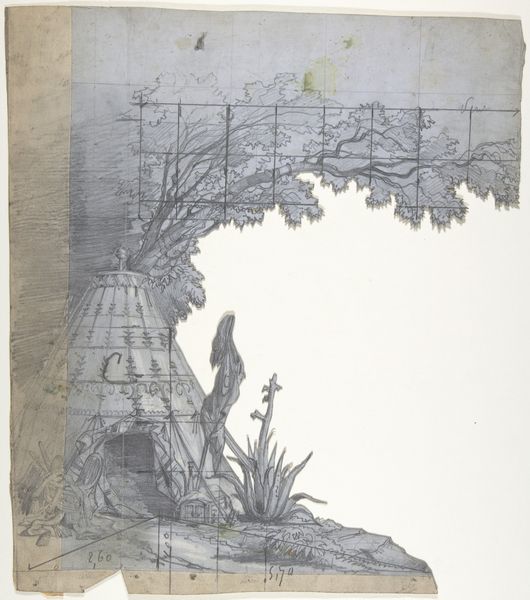
Design for a Stage Set at the Opéra, Paris 1830 - 1890
0:00
0:00
Dimensions: Irregular sheet: 8 7/16 x 5 9/16 in. (21.5 x 14.1 cm)
Copyright: Public Domain
Curator: This delicate drawing, titled "Design for a Stage Set at the Opéra, Paris," comes to us from Eugène Cicéri. We believe it was created sometime between 1830 and 1890, during a fascinating period of operatic innovation. The piece is rendered in pencil on paper, with notations and grids visible. Editor: My first thought is "ephemeral." The wispy pencil lines and the paper itself, with its imperfections, speak of something fleeting, a vision sketched before it fully took form on a grander scale. It feels provisional. Curator: Exactly. It's interesting to consider this work through a lens of performativity, especially given the social context of the Paris Opéra during the 19th century. Who was the Opéra for, who performed there, and what narratives were being amplified or silenced? This design holds the ghosts of those performances. It gives us insights into a society of extreme disparities in gender and class, visible through what plays and spectacles it enabled. Editor: And if we think about the labor involved – not just Cicéri's hand moving across the paper, but also the teams of stagehands, carpenters, and costume designers needed to translate this two-dimensional sketch into a three-dimensional reality. What does this raw, hand-drawn artifact tell us about this complex network of making? The material history goes far beyond pencil on paper, and intersects with class, and other kinds of hidden, strenuous labors. Curator: Indeed, examining it further, this drawing also presents an idealized, romanticized vision of a particular architectural setting. There’s the question of what historical narratives the opera intended to evoke. Whose history was being visually privileged? Editor: Absolutely. This sketch, with its deliberate marks and measured grids, is more than just a simple stage design. It is evidence of the intellectual, creative, and material labor needed to construct illusion on an epic scale. Curator: By reflecting on how Cicéri’s romantic landscape operates as both a representation and a tool for shaping cultural and social values, we can begin to have an enriched awareness of history and theatre. Editor: And examining the materials, processes, and labor behind its production, we see beyond the image to a fuller understanding of the opera as a factory for both art and illusion.
Comments
No comments
Be the first to comment and join the conversation on the ultimate creative platform.

